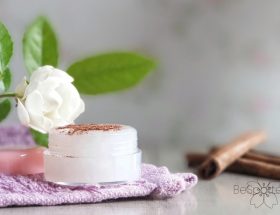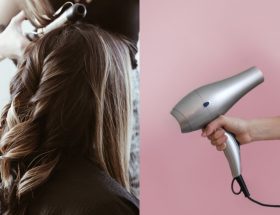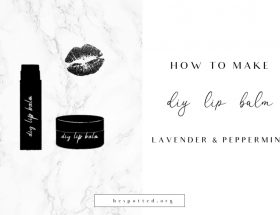This post may contain affiliate links. Any sales made through such links will reward me a small commission – at no extra cost for you!
Not really a skin type but more of a condition, dehydrated skin is a sneaky little beauty bummer that often hide itself behind other skin problems. Since it can occur with any skin type, it is not always easy to recognize it, so it is often neglected or mistreated.
To explain what having a dehydrated skin actually means, let’s see how our skin (or at least the hydration part) works.
Skin Types and Conditions
Your skin needs water to function normally and it has its own mechanisms to get it. It also has sebaceous glands that produce sebum, which creates a protective barrier on the surface of your skin. This oily barrier prevents water evaporation from your skin and that way helps it to stay hydrated.
Skin types are what we inherit and they are permanent. Skin conditions are what we develop and they are usually temporary.
Our skin type is mostly determined by how well our protective barrier (i.e. sebaceous glands) works. So, in case your skin does not produce enough sebum, you have dry skin type. If it produces too much sebum, you’re dealing with oily skin type.
There is also combination skin – when some parts of your skin are dry and others are oily. Normal skin type is when everything works just right.
Then there are skin conditions – temporary states or phases your skin goes through, caused mostly by external influences. Dehydrated skin is one of those states and it simply means your skin doesn’t have enough water.
Why Your Skin Gets Dehydrated
Your skin can get dehydrated if you have dry skin, since dry skin doesn’t retain water well due to the insufficient skin barrier. You can also get dehydrated skin if your skin is oily, since people often use too harsh products to remove that excess oil.
Not drinking enough water can lead to a whole body dehydration, and that includes your skin. Increased intake of caffeine or alcohol can dehydrate your skin.
Also, we lose water when we sweat a lot, so your skin can get dehydrated during summer heats or if you exercise a lot. During winter, when there is not enough moisture in the air, your skin can also show a lot of dehydration signs.
Dehydrated Skin Signs
The symptoms of dehydrated skin can be very similar to dry skin’s, so it can be hard to recognize it. What makes things worse – even if covered with excess oil, your skin can still be very dehydrated.
One thing you can do is pinch some skin on your cheek between your fingers. If the skin wrinkles up and shows other accelerated signs of aging, it is more than likely dehydrated. Also, dehydrated skin won’t bounce back once you let it go.
Here are some common and most obvious signs of dehydrated skin:
- itchiness and increased sensitivity
- dull, greyish looking skin
- uneven complexion
- dark circles under your eyes
- sunken eyes
- skin “shadows” under your eyes and around your nose
- skin tightness
- rough texture
- fine lines and surface wrinkles.
How to Quickly Replenish Dehydrated Skin
First of all, since what you eat and drink, as well as environmental influences, are the main cause of dehydrated skin, simple lifestyle changes can help you to quickly and easily completely recover and replenish dehydrated skin.
Obviously, drink enough water and eat food rich in water. Limit the intake of caffeine and alcohol and completely cut out cigarettes. Also, investing in a humidifier can make all the difference between dull, tired looking skin and a bright, plump, glowing perfection.
As for the cosmetics, a mild face cleanser is the first thing you’ll need. Nothing too harsh that would dehydrate your skin even further. Moisturizer should be light, refreshing and of course – very hydrating. If your skin type is dry, you can add a bit of some face oil on top.
Also, a gentle scrub once or twice a week can significantly improve your complexion since dehydrated skin tends to develop a dead skin cell buildup and flaky patches. You can follow the scrub with this DIY Hydrating Face Mask for Bright Skin and Dewy Glow.
But what dehydrated skin could use the most is a hydrating face serum. Serums supply the skin with a huge amount of high quality active ingredients, so they can replenish your skin in no time and restore that youthful glow. Especially serums that contain hyaluronic acid can be beneficial to dehydrated skin.
Face mists are also perfect for treating dehydrated skin, but most girls don’t use them correctly, which can even further dehydrate the skin. The trick is to spray a mist on your face and then, while your skin is still damp, apply a moisturizer to lock in that moisture.
You can learn here what the difference between hydrating and moisturizing is – it can be super important for treating dehydrated skin…












